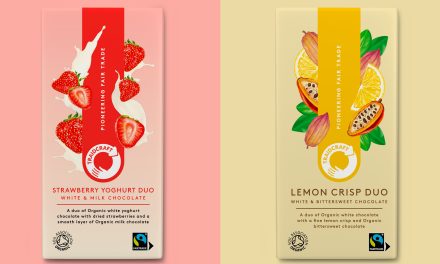The Almond Board of California outlines why almonds are nutritious, sustainable and a delicious pairing for chocolate products.
Almonds and chocolate sit at the nexus of global consumers’ desires: guilt-free, indulgent experiences that are better-for-you and environmentally conscious. According to the Almond Board of California’s 2020 Global Chocolate Study, surveyed global consumers selected almonds as the number one ingredient in their “ideal” chocolate product,1 and consumers not only benefit from almonds’ taste, but their nutrition too. One serving of almonds includes 4g of fibre and 6g of protein for satiety and sustained energy, seven essential vitamins and nutrients, 13g of “good” unsaturated fats and only 1g of saturated fat, as well as 50% of the daily value for vitamin E— a powerful antioxidant that promotes skin health and supports immunity. Chocolate with almonds already appeals to health and wellness-focused consumers, maximising almonds’ natural and nutritious qualities and reducing guilt.
Environmental concerns are growing as a key motivation in guilt-free indulgence. Innova Market Insights crowned “Shared Planet” as its top trend for 2022, noting that consumers look for snacks that both taste delicious and benefit the planet. With booming interest in plant-based eating, plant-based chocolate claims saw +18% average annual growth (2016-2020)2, and almonds have proven popular as the number one nut for plant-based new product claims in 2020.3
California almond farmers help manufacturers answer the call for sustainable chocolate innovation in a variety of ways. As major companies commit to ambitious environmental goals, improvements in production practices and water-saving technologies have helped the California almond industry reduce the amount of water it takes to grow one pound of almonds by 33 percent over the past 20 years4, and a recent lifecycle assessment found that current almond farming practices— coupled with coproduct use and the carbon captured by almond trees— are already offsetting about 50 percent of their carbon emissions.5
It’s still important for products to balance sustainability with taste and texture. Almond ingredients like almond butter, almond paste, almond milk and more can be used as key ingredients in innovative, plant-based chocolate. Almond butter has risen as a desired chocolate ingredient, with surveyed global consumers ranking the ingredient among their top 10 inclusions for dark and white chocolate products.1 With the rise of vegan chocolate products, almond paste and milk have been used to achieve creamy and rich textures, and whole almonds and almond pieces contribute signature crunchy textures and visual appeal. With over 14 versatile ingredient forms, almonds create endless possibilities for sustainable, nutritious chocolate innovation.







